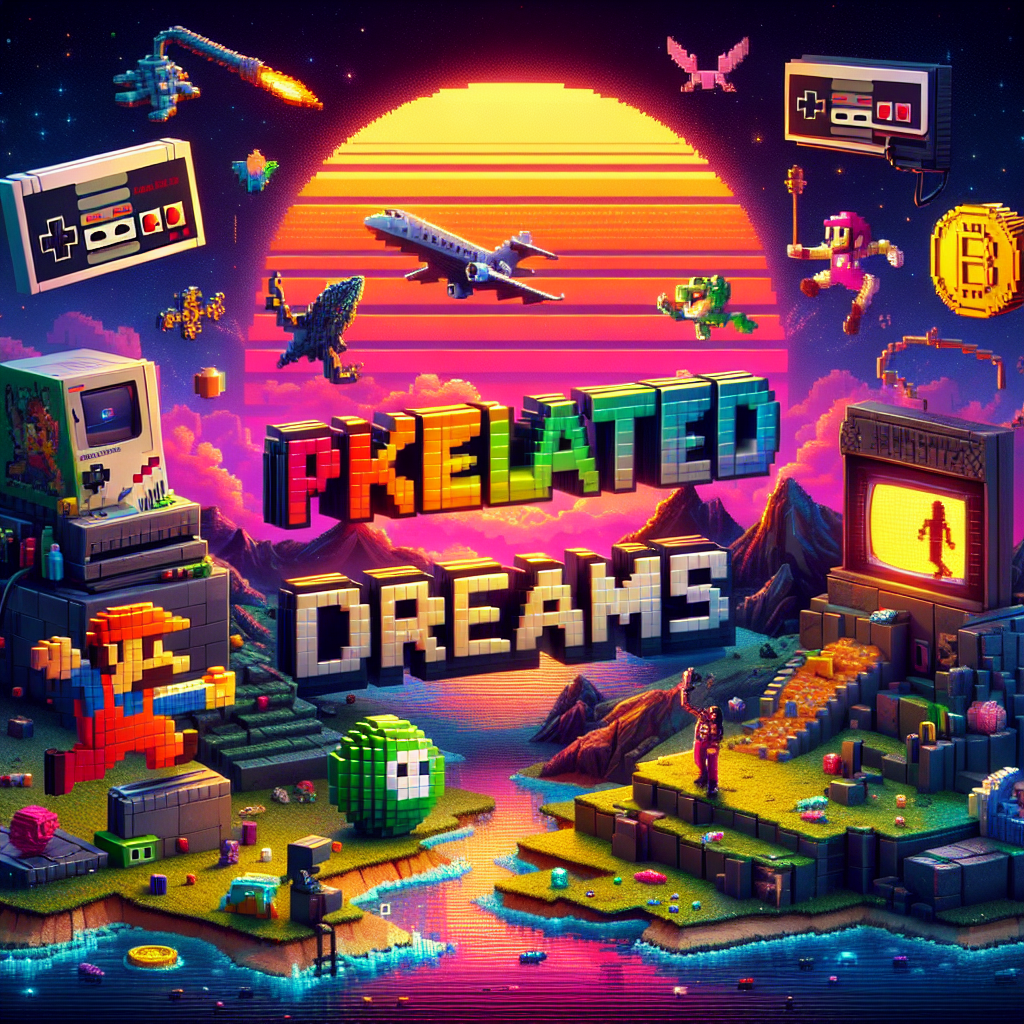Pixelated Dreams: Fan Art Concepts for the Nostalgic Gamer
In the vibrant world of gaming, nostalgia has a way of reigning supreme. For many gamers, the pixelated graphics of retro games evoke cherished memories of childhood adventures, countless hours spent in front of a flickering screen, and the thrill of conquering pixelated worlds. Artists have embraced this nostalgia, channeling their fondness for classics into thought-provoking fan art concepts that resonate deeply with players of all ages. In this article, we explore some of the most captivating themes and trends in fan art that celebrate the pixelated dreams of nostalgic gamers.
The Power of Pixels
At its core, pixel art is an artistic medium that harks back to the early days of video gaming. From the iconic sprites of 8-bit games to the refined, yet still pixelated, graphics of 16-bit systems, this form of art laid the foundation for the characters and worlds that players have loved for decades. Fan artists harness the simplicity and charm of these graphics to create homage pieces, reimagining beloved characters in new scenarios or expanding their stories into uncharted territories.
1. Character Mashups and Crossovers
One prevalent trend among fan artists is the creation of character mashups. Picture Mario in a Final Fantasy world, wielding a Masamune alongside his beloved Princess Peach, or Link from The Legend of Zelda teaming up with Kratos from God of War. These unique pairings tap into the shared universe concept beloved by fans, allowing for creative storytelling and dynamic interactions among characters that would never normally meet.
2. Retro Reboots
As the gaming industry often looks to the past for inspiration, so too do fan artists. Many enthusiasts recreate iconic scenes or locations from classic games, but with a modern twist. Using contemporary techniques while maintaining a pixelated aesthetic, artists can breathe new life into unforgettable moments. Imagine a reinterpretation of the Super Mario Bros. world, infused with lush colors and detailed backgrounds, yet still retaining that nostalgic simplicity. These reboots remind players of the heart and creativity that defined their favorite titles.
3. Emotional Illustrations
Fan art often serves to explore the emotional depth of characters and narratives that, in their original forms, may have relied upon simple graphics and text. Artists delve into the stories behind the games, translating them into evocative images that capture the essence of a character’s journey. Whether it’s a heart-wrenching farewell in Final Fantasy VII or the bittersweet ending of EarthBound, these artworks tap into the many layers of emotion that pixelated storytelling provided, resonating with gamers who have experienced such poignant moments.
4. The Evolution of Style
The evolution from pixelated graphics to today’s hyper-realism has not gone unnoticed by fan artists. Many choose to juxtapose the two styles, creating artworks that blend old-school aesthetics with new-age design elements. This trend not only celebrates the history of gaming but also critiques the industry’s trajectory. By visually contrasting the charm of pixel art with the intricacies of modern graphics, artists challenge viewers to consider what has been lost in the relentless pursuit of graphical perfection.
5. Celebrating Game Culture
Many fan art pieces celebrate the culture surrounding gaming itself. This can take the form of illustrations dedicated to gaming conventions, streams, and the community that binds gamers together. From pixelated portrayals of fans in their cosplay to vibrant representations of online streams, these artworks capture the joy and camaraderie that gaming inspires. They serve as a reminder that gaming is not just about the games but about the shared experiences that create lasting connections.
Conclusion: Pixels and Passion
Fan art concepts inspired by nostalgic gaming are a testament to the enduring legacy of pixelated graphics. Artists have embraced these aesthetics to explore their creativity, challenge conventions, and delve into the emotional heart of the stories we hold dear. With each new piece, they invite us to revisit our pixelated dreams and relive the magic of the game-infused past.
For both artists and fans, this nostalgia is not merely a longing for the simplicity of yesteryear but a celebration of the artistry, stories, and communities that have shaped the gaming landscape. In a gaming world that continues to evolve, the beloved pixels of our childhood remind us where it all began and encourage us to dream, create, and celebrate the journey.




